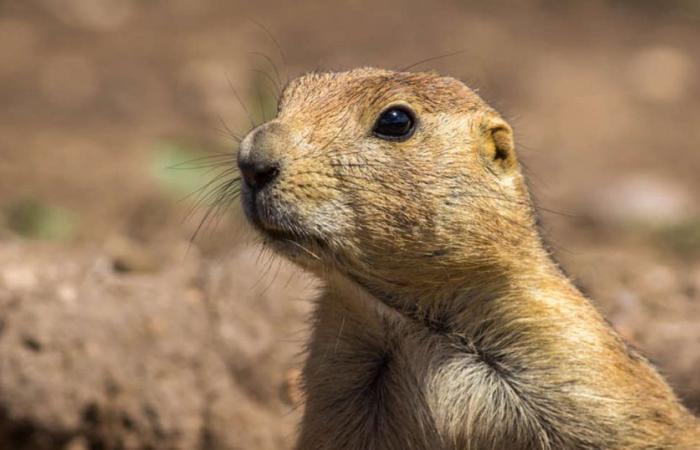Alan, Alan, Alan! bellowed a friendly rodent in a video from a BBC comedy program in which wildlife scenes had been dubbed. It was a groundhog, a close relative of the prairie dogs, which, due to its posture and way of vocalizing, seemed to, in fact, I was calling someone’s name…
The funny thing is that he probably was doing it, albeit in his own language. At the very least, They may have been verbalizing a very specific threat, something like ‘a hawk is flying over the territory, and it is not the same specimen as last week’.
For a human, a prairie dog does not stand out too much in terms of vocabulary. To any observer it may appear that they make a series of repetitive sounds. But this nor is it a problem with the communicative capacity of these animalsbut of the limitations of the hearing abilities of our species.
It is known, for example, that prairie dogs are capable of discriminate between a wide range of threats, even between the same species. Their call will be different depending on the danger: they will not describe a hawk in the same way as a fox. And, oddly enough, they will even call a person who shows up wearing a different shirt a different name.
These are the conclusions of two studies carried out by the scientific community. The scientists played sounds on playback and analyzed the results with the help of computer programs. The results revealed that these animals are extraordinarily specific: they call differently than a human, a coyote and a dog. When the study authors went back and fired a shotgun or threw seeds, the prairie dogs made a completely different sound.
Not only that, these rodents substantially modified their calls based on the attributes they distinguish, such as color, size, shape, even speed. For example, when they released several domestic dogs near the colony, they were shocked to see that They changed their vocalizations depending on size, shape or race.
For Constantine Slobochikoff, lead author of the study, everything indicates that these animals have nouns, such as (“human”, “dog”), and adjectives (such as ‘big’, ‘blue’), as well as verbal and adverbial modifications, ( as ‘run fast’, or ‘walk slowly’).
Just as they did with humans, they also changed radically the way of describing the animals in which they noticed some change. This is what they did when the researchers tested their discriminatory ability, showing them silhouettes similar to coyotes and skunks. When they saw them, they identified them immediately, although they detected that they were modified specimens in some way, with which the identifying calls changed significantly.
As Tom Mustill explains in his work on the communication of cetaceans and other animals How to speak whale, Slobochikoff stated that it seemed that these animals had a store of descriptive vocabulary labels that they used to construct a description of something completely new.
Does this mean that prairie dogs have a perfectly elaborate language, similar to that of humans? Difficult to know, given that no there is scientific consensus on what exactly the word ‘language’ means. There are even scientists who claim that this is an exclusively human peculiarity.
Scientists determined that certain animals, including prairie dogs and various cetaceans, have the innate ability to develop complex communication systems that, at the very least, resemble our sentences. If we do not understand them, he points out, it is because we are not capable of listening to them.







